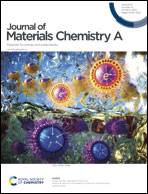Nature of electronic excitations in small non-stoichiometric quantum dots†
Abstract
Colloidal quantum dots (QDs) have emerged as nanocrystalline semiconductors with tunable optoelectronic properties that have attracted attention for numerous commercial applications. While a significant amount of computational research has focused on understanding the stoichiometric QDs, most of the experimental synthesis techniques lead to non-stoichiometry in QD composition. In this work, we utilize time-dependent density functional theory to investigate the nature of electronic excitations in experimentally relevant non-stoichiometric cadmium selenide (CdSe) nanoclusters in a dielectric medium. Contrary to the stoichiometric QDs, we find a distinct charge transfer character for low-energy electronic excitations in non-stoichiometric QDs. This partial charge transfer occurs between the core and surface of QDs due to the charge imbalance originating from the inequivalent number of anionic and cationic atoms in these regions. This general phenomenon, accompanied with charge localization, results in optically dark low-energy transitions that would potentially hamper emissions in non-stoichiometric QDs, especially in anion-rich QDs. The insights from this study establish relationships between the optical properties and charge distributions in non-stoichiometric QDs that would facilitate their tunability for various applications.



 Please wait while we load your content...
Please wait while we load your content...